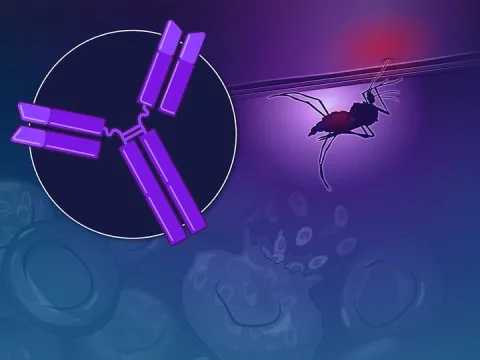Global childhood vaccine coverage in 2024 faces a challenging landscape marked by significant inequalities despite some progress, as highlighted in the latest WHO vaccine report. With 14.3 million children still unvaccinated, addressing vaccine inequality is paramount for achieving comprehensive childhood immunization. While the diphtheria, tetanus, and pertussis (DTP) vaccine coverage stands at 89%, the emergence of measles outbreaks serves as a stark reminder of the gaps that still exist in global health efforts. The report emphasizes the urgent need for improved access to vaccines in conflict-affected regions, where a disproportionate number of children remain at risk. As we strive towards enhanced childhood immunization, understanding these dynamics will be critical in ensuring all children receive their essential vaccines and protection from preventable diseases.
In 2024, the situation of immunization among the youngest populations around the globe reveals a tapestry of both advancements and setbacks. The latest statistics on juvenile vaccination show that while many children receive vital doses, substantial gaps persist, leading to dangerous health disparities. Not only do these discrepancies in vaccine uptake contribute to ongoing measles outbreaks, but they also highlight the urgent need to address the barriers faced by millions in underserved regions. Strategies aimed at boosting vaccine access and overcoming misinformation are crucial for safeguarding children’s health and wellbeing worldwide. As global health leaders call for action, it’s clear that a collaborative effort is necessary to ensure every child is offered the life-saving benefits of immunization.
Current State of Global Childhood Vaccine Coverage 2024
As reported by the World Health Organization (WHO), global childhood vaccine coverage stands at an encouraging yet precarious 89% for infants receiving at least one dose of the diphtheria, tetanus, and pertussis (DTP)-containing vaccine. However, this statistic conceals a troubling reality—over 14.3 million children are classified as ‘zero-dose,’ meaning they have not received even a single vaccine. This marks a substantial increase from prior years, creating significant concern among public health officials as it poses a barrier to achieving the targets set by the Immunization Agenda 2030.
The WHO report emphasizes the worrying trend of rising vaccine inequality, particularly in conflict-affected regions where childhood immunization rates sharply decline. Countries like Afghanistan and Nigeria account for a disproportionate share of these ‘zero-dose’ children. This necessitates urgent responses from governments and global health entities to not only provide immediate support in these conflict zones but also to address the underlying causes of vaccine hesitancy and misinformation that exacerbate the situation.
The Impact of Vaccine Inequality on Childhood Immunization
Vaccine inequality remains a pressing issue in the realm of global health. As highlighted in the WHO vaccine report, a staggering 55% of children with no vaccinations or incomplete DTP vaccination reside in just 10 countries. These include some of the most troubled regions worldwide, where ongoing conflict complicates efforts to protect vulnerable populations. The disruption of health services due to violence and instability has emerged as a significant barrier to achieving equitable vaccine coverage.
Addressing vaccine inequality is imperative not just for individual health, but for community well-being and the prevention of future outbreaks. Nations with low immunization rates risk outbreaks of preventable diseases like measles, which can rapidly spread in under-vaccinated populations. As multiple studies have shown, ensuring equitable access to vaccines could mitigate these risks and improve public health outcomes significantly.
Rising Measles Outbreaks Amid Increased Vaccine Coverage
Despite reporting an increase in the number of children receiving the measles vaccine, the WHO has flagged a concerning rise in measles outbreaks around the globe. In 2024, while approximately 84% of children received their first dose of the measles vaccine—an increase from previous years—this rate falls short of the 95% threshold required to establish herd immunity in communities. Failure to achieve this coverage leaves 30 million children vulnerable to the disease, illustrating a critical gap in the global immunization landscape.
The increase in measles outbreaks, which nearly doubled from earlier years, highlights the urgent need for enhanced vaccination strategies that effectively address vaccine hesitancy. Countries currently experiencing large-scale measles outbreaks exemplify the consequences of insufficient vaccine coverage—emphasizing the importance of not only improving access but also fostering trust in vaccination programs through transparent communication and community engagement.
Childhood Vaccination and Humanitarian Aid in Conflict Zones
Humanitarian crises and ongoing conflicts significantly impact childhood immunization efforts. As stated by the WHO, a quarter of the world’s infants live in countries facing instability, yet they comprise half of all unvaccinated children globally. The intersection of public health and humanitarian efforts becomes crucial to ensuring that children in these regions receive essential vaccinations. Without immediate intervention, these children will remain at an increased risk for preventable diseases.
Incorporating vaccination programs within humanitarian aid is essential for protecting the health of children living in precarious situations. The WHO calls for a collaborative approach, where global health initiatives work alongside humanitarian organizations to provide comprehensive support to affected populations. This strategy not only helps tackle vaccine inequity but also ensures durable health infrastructure can be established in the aftermath of humanitarian crises.
The Role of Modern Vaccination Strategies in Preventing Disease
Modern vaccination strategies have been pivotal in the fight against infectious diseases. The data from 2024 indicate that 89% of infants globally received at least one dose of the DTP vaccine, showcasing the effectiveness of these approaches. Public awareness campaigns and healthcare access improvements have been essential in increasing compliance among populations, particularly in areas previously marked by low immunization rates.
Innovations in vaccine delivery methods and education about the importance of childhood immunization are also critical. For instance, mobile vaccination units and community health workers play a significant role in reaching underserved populations who might otherwise be excluded from traditional healthcare systems. By continuing to evolve vaccination strategies and addressing vaccine hesitancy through targeted educational initiatives, we can improve childhood immunization coverage and reduce the incidence of preventable diseases.
Global Responses to Vaccine Coverage and Immunization Challenges
The global community’s response to the challenges of vaccine coverage has been a mix of progress and setbacks as reported in various WHO publications. Government initiatives aiming to strengthen vaccine supply chains and support local health systems are crucial to improving childhood immunization rates. Furthermore, addressing misinformation regarding vaccines plays a significant role in building public trust and encouraging higher participation rates.
As nations work towards achieving the Immunization Agenda 2030 goals, collaboration between global health organizations and local governments is vital. Sharing best practices, resources, and data can facilitate improvements in vaccination coverage, even in the most challenging contexts. A focused strategy on combatting vaccine misinformation and enhancing community outreach will be essential as we move toward universal childhood vaccine accessibility.
Vaccine Coverage Trends Over the Last Five Years
Examining the trends in vaccine coverage over the past five years reveals both progress and alarming stagnation, particularly among the DTP vaccine series. While global statistics show a certain level of stability, the numbers indicate that only 131 out of 195 countries have managed to maintain a 90% vaccination rate for the initial DTP dose. This highlights an urgent need to invigorate vaccination efforts, especially in light of the recent increase in zero-dose children.
Moreover, it’s vital to consider the disparities that exist within and between countries when analyzing trends in vaccination coverage. While some regions have made significant strides, others lag far behind, suggesting a need for targeted interventions where coverage is insufficient. Consistent monitoring and evaluation of vaccination programs will be important in reversing the current trends and increasing immunization rates across the globe.
Building Trust to Enhance Vaccination Rates
Trust plays a crucial role in ensuring the success of vaccination campaigns. The rise of misinformation regarding vaccine safety and efficacy has led to a growing hesitancy in some communities. To combat this issue, health authorities and organizations must actively engage with communities, addressing their concerns and educating them about the importance of vaccinations.
Creating a transparent dialogue that includes testimonies from vaccinated individuals, healthcare providers, and community leaders can significantly enhance public perceptions of vaccination. This trusted messaging not only counters misinformation but also reinforces the collective responsibility towards community health and well-being. As we strive for higher vaccine coverage, fostering trust within the community will be instrumental in curbing vaccine hesitancy.
Future Directions for Global Childhood Immunization
Looking ahead, the future of global childhood immunization hinges on our ability to adapt and innovate. Continued emphasis on equity in access to vaccines will be essential, especially as we approach the challenges posed by climate change and emerging infectious diseases. Partnerships across various sectors will be necessary to sustain progress and ensure that no child is left vulnerable to preventable diseases.
Additionally, investment in research and development for new vaccines and delivery methods will support global health resilience. Strengthening health systems and building capacity within communities will empower local populations to take charge of their health. With these advancements, we can aspire to create a robust framework for childhood vaccinations that aligns with global health recommendations and responds to the needs of diverse populations.
Frequently Asked Questions
What is the current status of global childhood vaccine coverage in 2024?
In 2024, global childhood vaccine coverage shows modest gains with 89% of infants receiving at least one dose of the DTP vaccine. However, 14.3 million children remain ‘zero-dose’, having received no vaccines at all, highlighting ongoing challenges in achieving global vaccination goals.
What are the implications of vaccine inequality on childhood immunization rates in 2024?
Vaccine inequality significantly impacts childhood immunization rates as 55% of the 19.9 million children lacking vaccinations reside in just 10 countries experiencing conflict. This situation exacerbates the existing disparities, making it crucial to improve access to vaccines in these regions.
How has the coverage of DTP vaccines changed globally in 2024?
Globally, the coverage of DTP vaccines in 2024 remained stable with 89% of infants receiving the first dose and 85% completing the three-dose series. However, a decline in completions from 2023 indicates the need for renewed efforts to enhance vaccine uptake, especially in conflict-affected areas.
What role does conflict play in childhood vaccine coverage in 2024?
Conflict plays a significant role in hindering childhood vaccine coverage, with countries affected by fragility and humanitarian crises accounting for 50% of the world’s unvaccinated children. This highlights the necessity for integrated humanitarian strategies that include immunization as a critical component.
What is the current situation regarding measles outbreaks and vaccination coverage in 2024?
In 2024, although 84% of children received the first dose of measles vaccine, significant gaps remain, as 30 million children are still at risk for measles. The number of countries experiencing major outbreaks doubled to 60, underscoring the urgent need for vaccination efforts to reach the 95% target needed for community immunity.
How have regional vaccination rates changed according to the WHO vaccine report for 2024?
The WHO vaccine report for 2024 indicates improved regional vaccination rates, with hepatitis B coverage increasing from 64% to 68% and pneumococcal vaccine coverage rising from 76% to 79%. However, these improvements are uneven and vary significantly by region, particularly in areas affected by conflict.
What measures are essential to address the gaps in global childhood vaccine coverage moving forward?
To address the gaps in global childhood vaccine coverage, especially in conflict-affected regions, it is essential to enhance humanitarian aid, counter misinformation about vaccine safety, and implement targeted immunization campaigns that prioritize accessibility and education.
Why is achieving high DTP vaccine coverage critical for global health in 2024?
Achieving high DTP vaccine coverage is critical for global health in 2024 as it not only protects against diphtheria, tetanus, and pertussis but also serves as a measure for overall childhood immunization success. High coverage rates are crucial to prevent outbreaks and ensure healthier futures for children globally.
| Key Point | Details |
|---|---|
| Global Coverage | In 2024, 89% of infants globally received at least one dose of DTP vaccine. |
| Zero-dose Children | 14.3 million children have never received a vaccine, exceeding the 2024 target. |
| Major Gaps | 55% of unvaccinated children live in 10 conflict-affected countries. |
| Measles Vaccination | 84% received the first dose, but outbreaks are increasing with 30 million at risk. |
| Hepatitis B & HPV | Hepatitis B coverage improved from 64% to 68%; HPV coverage at 76% in the Americas. |
Summary
Global childhood vaccine coverage in 2024 highlights significant inequalities as well as some progress amidst ongoing global health challenges. While 89% of infants received at least one dose of the DTP vaccine, the rise in vaccine-preventable diseases, particularly measles, calls for urgent attention. The stark number of 14.3 million zero-dose children underscores the pressing need for equitable vaccine distribution and targeted interventions in conflict-affected regions. Moving forward, it is crucial for global leaders and health organizations to address these disparities and ensure that every child receives the vaccines they need to thrive.
The content provided on this blog (e.g., symptom descriptions, health tips, or general advice) is for informational purposes only and is not a substitute for professional medical advice, diagnosis, or treatment. Always seek the guidance of your physician or other qualified healthcare provider with any questions you may have regarding a medical condition. Never disregard professional medical advice or delay seeking it because of something you have read on this website. If you believe you may have a medical emergency, call your doctor or emergency services immediately. Reliance on any information provided by this blog is solely at your own risk.








